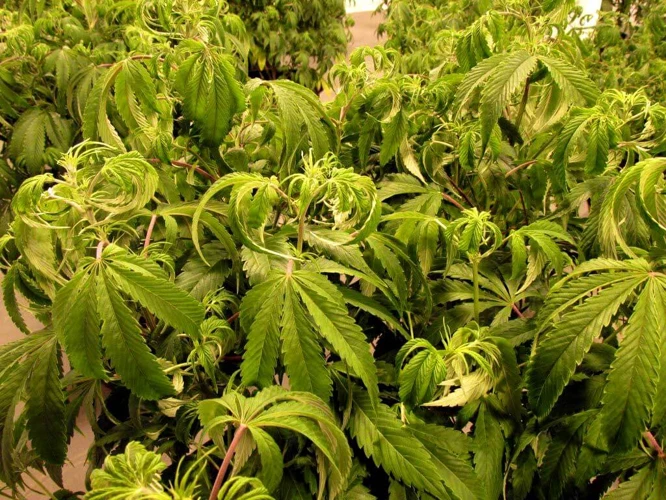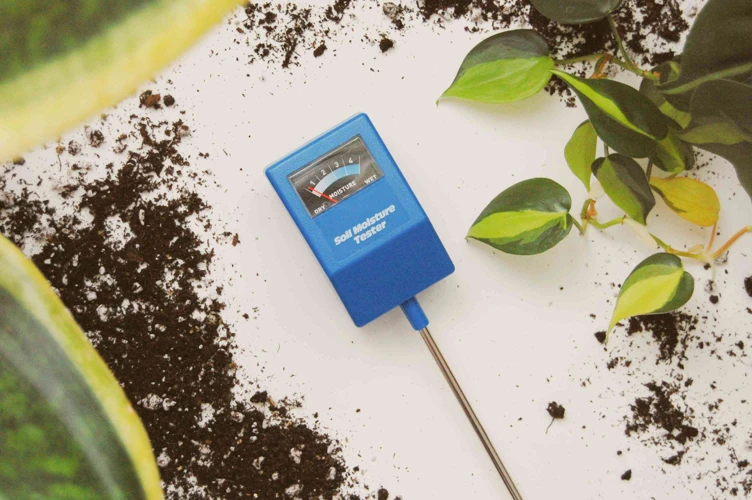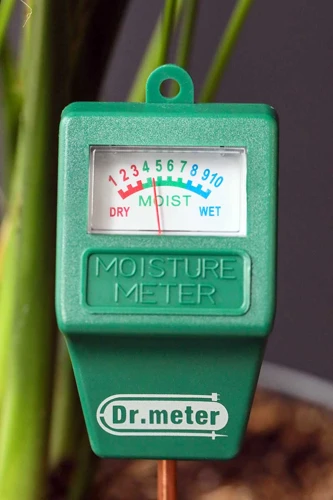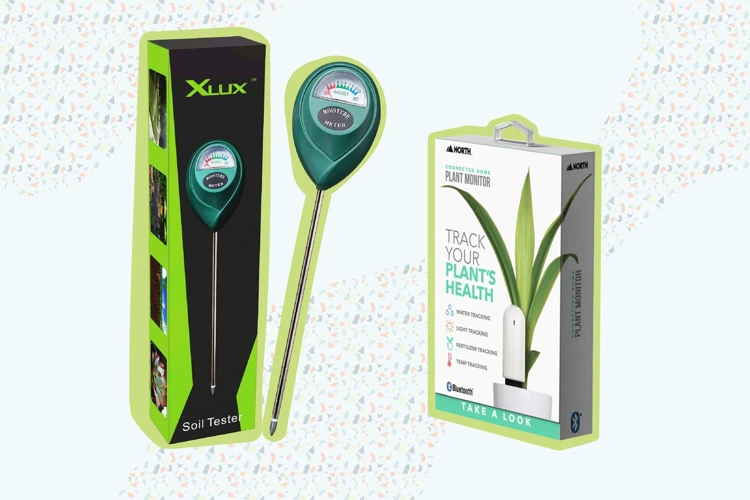
How to Use Moisture Meters to Prevent Overwatering When Growing Cannabis
Growing cannabis can be a rewarding experience, but it can also be tricky. One of the most common mistakes made by novice growers is overwatering their plants. While water is essential for growth, too much of it can lead to root damage, stunted growth, and mold and mildew growth. As a grower, it’s important to know how to prevent overwatering, and one of the best tools for doing that is a moisture meter. In this guide, we’ll explore the benefits of using a moisture meter for cannabis plants, how to use one properly, and other ways to prevent overwatering.
The Consequences of Overwatering Cannabis
Contents
Overwatering cannabis can have detrimental effects on the health and growth of your plants. It may be tempting to give your plants more water than they need, but doing so can lead to a variety of issues that can harm your harvest. From root damage to mold and mildew growth, the consequences of overwatering can be severe. To avoid these issues, it is important to understand the impact of overwatering and how to prevent it. Let’s take a closer look.
Root Damage
When cannabis plants are overwatered, root damage often occurs. Overwatering can lead to a lack of oxygen in the soil, which creates an anaerobic environment that is harmful to the roots. The roots may begin to rot and decay, causing irreversible damage to the plant.
Overwatering can also lead to nutrient deficiencies in the soil, as the excess water may flush out essential nutrients. This can weaken the plant and make it more susceptible to disease and pests.
To avoid root damage caused by overwatering, it is essential to use a moisture meter or other methods to ensure that the plants are not receiving too much water. Proper drainage is also crucial to prevent standing water in the soil. If the soil does not drain properly, the roots can become waterlogged, leading to root rot and other problems. See our article on improving drainage for more information.
Another way to prevent root damage is to use high-quality soil that is well-draining and provides adequate nutrients for the plants. By observing the plants and their growth patterns, you can also identify any signs of overwatering or other issues that may be affecting the roots. If caught early, these problems can often be corrected before they cause irreversible damage.
Stunted Growth
Overwatering cannabis plants can lead to various negative consequences, including stunted growth. When the roots are constantly submerged in water, they’re unable to absorb essential nutrients and oxygen from the soil, which hinders the plants’ overall development.
Stunted growth is a common problem for overwatered plants, and it can be identified through a variety of symptoms. These include yellowing of the leaves, wilting, and slow growth. In some cases, the plants may eventually stop growing altogether. In contrast to overfertilization, which can lead to rapid growth without adequate root development, overwatering creates a suboptimal environment for the roots to thrive.
In order to prevent stunted growth, it’s important to monitor the moisture levels in the soil. This can be done easily with the use of a moisture meter. By using a moisture meter, whether digital or analog, cannabis growers can get an accurate reading of the level of moisture in the soil and adjust their watering schedules accordingly.
It’s important to note that stunted growth isn’t always caused by overwatering. Other factors, such as lack of nutrients, pests, and diseases, can also contribute to stunted growth. It’s important to address any potential issues and conduct a thorough assessment of the plant’s growing conditions to determine the root cause of the stunted growth.
Stunted growth can be a frustrating problem for cannabis growers but can be prevented with proper watering techniques and the use of a moisture meter. By providing the right amount of water and ensuring adequate drainage, growers can ensure their cannabis plants have the best chance at thriving.
| Signs of Stunted Growth | Causes |
|---|---|
| Yellowing of leaves | Overwatering, lack of nutrients |
| Wilting | Overwatering, lack of water, poor soil quality |
| Slow growth | Overwatering, lack of nutrients, poor lighting |
| Small plant size | Overwatering, lack of nutrients, poor genetics |
Mold and Mildew Growth
Excessive watering can lead to a plethora of problems, one of the most common being mold and mildew growth. When cannabis plants are consistently overwatered, their roots become waterlogged, which affects the plant’s ability to absorb essential nutrients. Without proper absorption of nutrients, the plant is weakened and becomes susceptible to pests, diseases, and fungal infections such as mold and mildew.
Mold growth is a common issue that cannabis growers face, especially in humid climates or environments. Mold spores can spread quickly and infect an entire crop, causing irreparable damage. Mold can take on different colors and textures, such as black, white, grey, or green, and can produce a pungent, musty odor. When mold grows, it can produce mycotoxins that are harmful and even deadly to humans and animals.
Mildew growth is another common problem that cannabis growers face. Mildew is a type of fungus that appears as a white or grey powdery coating on the leaves and stems of the cannabis plants. This powdery substance disrupts the plant’s ability to absorb sunlight, inhibiting its growth and affecting its quality. Mildew is also contagious and can quickly spread from plant to plant, causing extensive damage to the cannabis crop.
To prevent mold and mildew growth in cannabis plants due to overwatering, it is essential to monitor the soil moisture levels carefully. By using a moisture meter, growers can accurately determine when their plants need water and avoid watering the plants excessively. Another important factor to consider is ensuring proper air circulation and ventilation in the grow room or the cultivation area to prevent the growth and spread of mold and mildew. Additionally, growers can incorporate natural remedies such as neem oil or a baking soda-water solution to help prevent mold and mildew growth.
It is essential to be mindful of the water needs of your cannabis plants and to take necessary precautions to prevent any fungal or microbial growth that may harm your crop’s quality and quantity.
What is a Moisture Meter?
A moisture meter is a gardening tool that measures the moisture content in soil. It is an essential tool for every cannabis grower who wants to prevent overwatering and ensure healthy plant growth. Moisture meters come in different varieties and can vary in price and functionality. They are available in both digital and analog forms, with single or multiple probe options.
The most common moisture meter for cannabis cultivation is a single probe digital meter, which is a handy tool for monitoring the moisture levels of the soil around the plant roots. These meters are easy to use, accurate, and can present results quickly.
Analog meters, on the other hand, are less popular but still widely used in the cannabis community. They are cheaper than digital meters, but they are less convenient to use and less accurate. Analog meters use a needle and a dial to display moisture levels and require manual calibration before each use. They are ideal for growers who want to learn how to read a meter intuitively.
Multiple probe meters use more than one probe to measure the moisture levels at different depths in the soil. Although they are a bit more expensive than single probe meters, they can provide more detailed information on how moisture levels change at different soil levels. This feature is particularly useful for larger grow operations, where growers need to constantly monitor moisture levels in different areas.
Whatever moisture meter a grower chooses, it is essential to ensure that it is calibrated correctly and used as per the manufacturer’s instructions. Investing in this tool will not only prevent overwatering but also save growers time and money by ensuring their plants get the right amount of water and nutrients they need to thrive.
How to Use a Moisture Meter for Cannabis Plants
Once you have obtained a moisture meter for your cannabis plants, you may be wondering how to use it correctly. Don’t worry, it’s simpler than you may think! With a few easy steps, you can help ensure that your plants are getting the proper amount of water they need to thrive. Let’s walk through the process together and learn how to read the results to get the most out of your moisture meter.
Step 1: Inserting the Probe
One of the most important steps in using a moisture meter for your cannabis plants is correctly inserting the probe. Here’s a step-by-step guide on how to do it:
| Step | Description |
|---|---|
| Step 1 | First, make sure the soil is moist but not too wet. Overwatering can actually affect the accuracy of the meter’s readings. The soil should be dry enough that it crumbles easily but not so dry that it’s hard to the touch. |
| Step 2 | Insert the probe into the soil at the base of the plant. Be sure to insert it deep enough that it reaches the roots. The probe should be inserted vertically and not at an angle. |
| Step 3 | Wait a few seconds for the meter to get an accurate reading. Some meters take longer than others, so be sure to read the instructions carefully. |
| Step 4 | Remove the probe from the soil and wipe it clean before taking another reading. This will prevent any buildup of soil or debris from affecting future readings. |
Remember that it’s important to take readings from multiple areas around the plant, not just one spot. This will give you a more accurate picture of the moisture levels in the soil. It’s also a good idea to take readings at different times of day, as the moisture levels can vary depending on the time of day and the amount of sunlight the plant receives. By using a moisture meter and following these steps, you can ensure that you’re not overwatering your cannabis plants and that they’re getting the right amount of moisture they need to thrive.
Step 2: Reading the Results
After inserting the probe into the soil, it’s time to read the results of the moisture meter. The probe of the moisture meter has sensors that detect the amount of moisture in the soil. The sensor can determine if the soil is too dry, too wet, or just right for growing cannabis. Here’s a table summarizing what the different readings mean and what actions you need to take.
| Moisture Sensor Reading | Action Needed |
|---|---|
| Dry | The soil is too dry and needs to be watered. |
| Slightly Dry | The soil is slightly dry and needs to be watered. |
| Good | The soil is just right, and no action needs to be taken. |
| Slightly Wet | The soil is slightly wet, and no water is needed until the next check. |
| Wet | The soil is too wet, and you need to wait a few days until the next check. |
It’s important to note that when the soil is too dry, it can stress the plant and affect the potency and yields of the cannabis plant. When the soil is too wet, it can lead to overwatering, which can cause root rot and stunted growth. By using a moisture meter, you can accurately determine the amount of water your cannabis plants need, which can prevent overwatering and lead to healthy and bountiful plants.
Choosing the Right Moisture Meter for Your Cannabis Plants
Finding the right moisture meter for your cannabis plants can be a bit overwhelming, as there are many options available in the market. It’s essential to choose the one that best fits your needs and budget. With digital and analog options, as well as single and multiple probe versions, it can be challenging to know which one to choose. In this section, we’ll explore some of the factors to consider when selecting a moisture meter for your cannabis plants.
Digital vs. Analog Meters
When choosing a moisture meter for your cannabis plants, you will come across two main types: digital and analog meters. Both types measure the amount of moisture in the soil, but they have some differences in their features and capabilities.
Analog meters are the traditional type, and they work by using a metal probe inserted into the soil. The moisture level is then indicated on a needle gauge. These are simple and straightforward to use, but they may have some limitations. They may not be as accurate as digital meters, and they may be affected by temperature, soil composition, and other factors.
Digital meters, on the other hand, use electronic sensors to measure the moisture level. They are more advanced and precise, and they may also have additional features such as temperature and pH measurement. Digital meters often have a screen display that shows the results, making it easier to read and interpret the data. However, digital meters can be more expensive than analog meters.
Here’s a table summarizing some of the key differences between digital and analog moisture meters:
| Digital Meters | Analog Meters | |
|---|---|---|
| Accuracy | High | Medium |
| Price | Expensive | Affordable |
| Additional Features | Temperature, pH measurement | No additional features |
| Ease of Use | Easy to read results on screen display | Needle gauge may be harder to read |
| Applicability | Growing operations of any size | Home gardeners |
Ultimately, the choice between digital and analog meters will come down to personal preference, budget, and the level of precision required for your cannabis plants. Both types can be effective in preventing overwatering and ensuring that your plants are growing in the right conditions.
Single vs. Multiple Probe Meters
When it comes to choosing a moisture meter for your cannabis plants, you will have the option of selecting either a single probe or a multiple probe meter. Here are some important factors to consider when deciding between the two:
- Average Moisture Level: If you want to get a general idea of the moisture level throughout the growing medium, a single probe meter will suffice. These meters are designed to give an average reading of the moisture level in the soil.
- Variability in Moisture Levels: If you’re concerned about uneven watering, a multiple probe meter may be more beneficial. These meters can be used to measure the moisture level at different depths of the soil, giving you a more complete picture of the moisture distribution.
- Cost: Single probe meters are generally less expensive than multiple probe meters, so if you’re on a tight budget, a single probe meter may be the best option for you.
- Accuracy: Multiple probe meters are typically regarded as more accurate than single probe meters since they can give you a more detailed understanding of the moisture distribution in the soil. However, this generally comes at a higher cost.
Ultimately, the choice between a single probe and a multiple probe meter will depend on your specific needs and preferences. If you’re looking for a quick and inexpensive way to get a general understanding of the moisture level in your growing medium, a single probe meter may be the best option. However, if you’re looking for a more detailed analysis of the moisture level throughout your soil, a multiple probe meter may be worth the investment.
Other Ways to Prevent Overwatering
Preventing overwatering in cannabis plants is crucial to ensure healthy growth and bountiful yields. While using a moisture meter is a great tool to monitor the moisture level of the soil, there are other preventive measures that can be taken to avoid overwatering. In this section, we will explore additional methods for keeping your cannabis plants properly watered and thriving. Follow these tips and tricks for healthy plants that will flourish all season long.
Improving Drainage
If you want to prevent overwatering in your cannabis plants, improving drainage is an important step to take. When soil doesn’t drain well, it creates a waterlogged environment that can lead to root rot and other problems. Here are some ways to improve drainage:
| Method | Description |
|---|---|
| Adding perlite and vermiculite | Perlite and vermiculite are both natural substances that help to aerate soil and improve drainage. You can mix them into your soil to create a lighter, fluffier texture that allows for better drainage. |
| Elevating pots | If you’re growing your cannabis plants in pots, you can improve drainage by elevating them off the ground. This will allow excess water to drain away more quickly and prevent the soil from becoming waterlogged. |
| Creating a gravel layer | You can create a layer of gravel at the bottom of your pots to help improve drainage. This will allow excess water to drain away from the roots and prevent them from sitting in water. |
| Using larger pots | If your cannabis plants are in small pots, they may be more susceptible to overwatering. Switching to larger pots can help improve drainage and give the roots more room to grow. |
Improving drainage can be a simple and effective way to prevent overwatering in your cannabis plants. By incorporating these methods into your growing routine, you can help ensure that your plants stay healthy and thrive.
Observe the Plants
One of the simplest ways to prevent overwatering in cannabis plants is to observe the plants closely and monitor their moisture levels. This can be easily done by checking the color and texture of the soil. When soil is watered excessively, it becomes waterlogged and heavy. This can cause the soil to become dense, reducing oxygen levels to the roots, leading to their death.
Here are some things to watch out for:
- Yellowing leaves, especially towards the bottom of the plant
- Wilting or drooping leaves even when the soil is moist
- Slow or stunted growth
- The soil feels cool or damp to the touch
If you observe any of these signs, it is likely that the plant is overwatered. In this case, it’s important to take corrective action immediately by adjusting the watering schedule or improving drainage.
Another method of observing the plants is to lift the container and feel its weight. If the container feels heavy, it indicates that there is still enough moisture in the soil, and watering can be postponed. On the other hand, if the container feels light, it’s an indicator that the plant needs water.
Observing the plants can also help you to identify any potential problems early on. Catching issues like mold or mildew in the early stages can help prevent them from becoming major issues that could impact your plants’ overall health.
In addition to observing the plants, using a moisture meter can help to get a more accurate reading of the soil moisture levels. This is especially useful for those who are new to growing cannabis as it allows for a more controlled approach to watering.
Using Quality Soil
In addition to using a moisture meter and improving drainage, using quality soil is another way to prevent overwatering of cannabis plants. Quality soil should be well-draining and able to retain moisture. It should have the proper balance of nutrients, pH levels, and aeration.
One type of quality soil that is highly recommended for cannabis plants is super soil – a blend of organic materials such as compost, peat moss, and perlite. Super soil has a high nutrient content and is designed to create a sustainable ecosystem for your plants to thrive in. It also provides good drainage and moisture retention.
Another option is to use a high-quality soil mix, specifically designed for cannabis plants. These soils contain the optimal amount of nutrients and pH levels for your plants to grow strong and healthy. Fox Farm Ocean Forest Potting Soil and Pro-Mix HP Mycorrhizae are two popular brands.
It is important to avoid using soils that are heavy and compacted, as they can hold too much water and cause root rot. Additionally, using soil that has been previously used or contaminated can lead to issues with pests and disease.
Using quality soil is crucial for preventing overwatering of cannabis plants. Super soil and high-quality soil mixes are great options to ensure the proper balance of nutrients, pH levels, and drainage. It is important to avoid using heavy, compacted, or contaminated soils to maintain a healthy growing environment for your plants.
| Type of Soil | Benefits |
|---|---|
| Super Soil | High nutrient content; good drainage and moisture retention |
| High-Quality Soil Mixes | Optimal nutrient and pH levels; good drainage |
| Avoid Heavy and Compacted Soil | Can hold too much water and cause root rot |
| Avoid Previously Used or Contaminated Soil | Can lead to issues with pests and disease |
Conclusion
Preventing overwatering is crucial for growing healthy cannabis plants. Overwatering can lead to root damage, stunted growth, and the growth of mold and mildew. Using a moisture meter is an effective tool to ensure proper watering of your plants.
When using a moisture meter, it is important to follow the proper steps for insertion and reading of the results. Choosing the right moisture meter for your plants is also important, whether it be a digital or analog meter and whether it has a single or multiple probe.
In addition to using a moisture meter, there are other ways to prevent overwatering such as improving drainage, observing the plants, and using quality soil. By implementing these methods, you can effectively prevent overwatering and promote healthy growth in your cannabis plants.
Taking the time and effort to properly care for your plants will result in higher yields and better quality cannabis. With the use of a moisture meter and other prevention methods, you can ensure your plants receive the right amount of water and avoid the negative consequences of overwatering.
Frequently Asked Questions
What is the ideal soil moisture level for cannabis plants?
The ideal soil moisture level for cannabis plants is between 50-60%.
What are the consequences of underwatering cannabis plants?
Underwatered cannabis plants will start showing signs of wilting and drooping, and can eventually die if left untreated.
How often should I water my cannabis plants?
It depends on environmental factors like temperature and humidity, but generally speaking, cannabis plants should be watered when the top inch of soil feels dry to the touch.
Can overwatering be fixed?
Yes, overwatered plants can be saved if caught early enough. Improving drainage and decreasing watering frequency can help the roots recover.
Can a moisture meter be used for other plants besides cannabis?
Yes, moisture meters can be used for a variety of plants and can be useful for any indoor or outdoor gardening situation.
What are some signs that my cannabis plants are overwatered?
Signs of overwatering include yellowing leaves, foul odors, wilting, and slowed growth.
How deep should I insert the probe when using a moisture meter?
The probe should be inserted at least 3 inches deep into the soil for an accurate reading.
Do I need to calibrate my moisture meter?
Some moisture meters require calibration, while others are pre-calibrated. Be sure to check the product manual for specific instructions.
Can a moisture meter prevent mold and mildew growth?
While a moisture meter can help prevent overwatering and reduce the risk of mold and mildew growth, it’s not a guarantee. Proper air circulation and environment control are also important factors.
What can I do if my cannabis plant is already showing signs of mold growth?
Remove any affected areas and increase air circulation and ventilation. Consider using natural fungicides like neem oil to prevent further mold growth.






